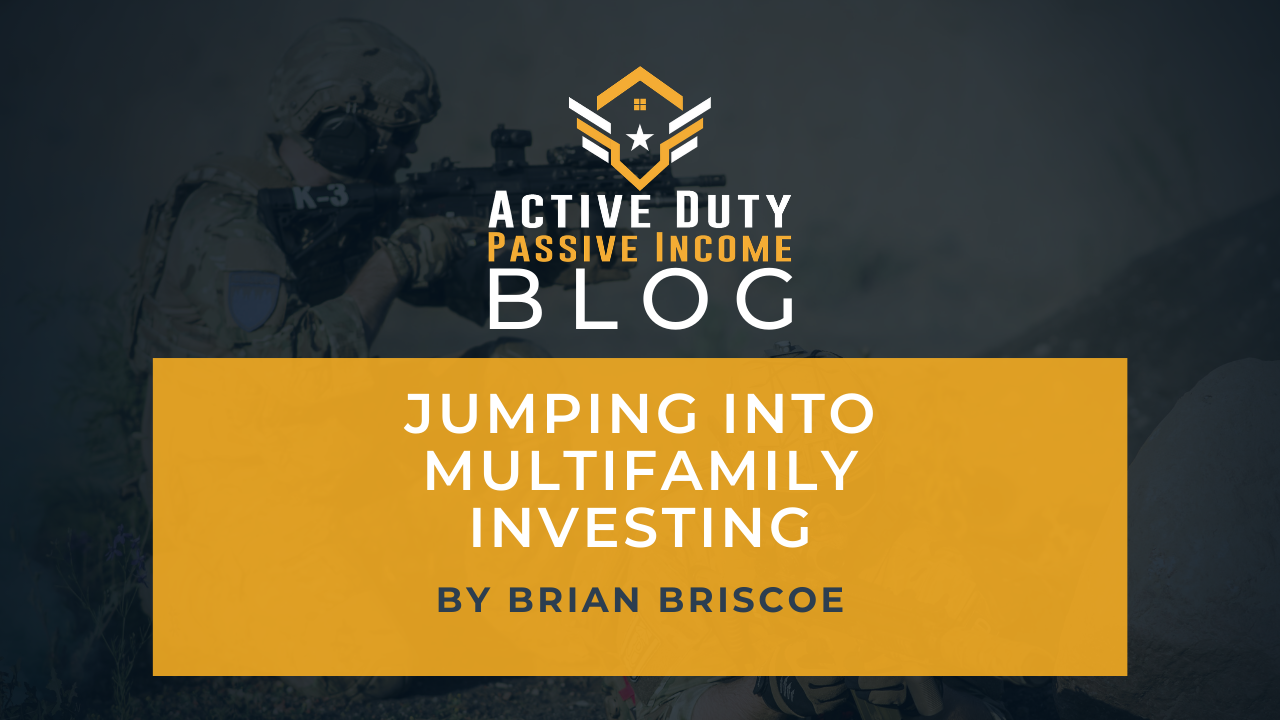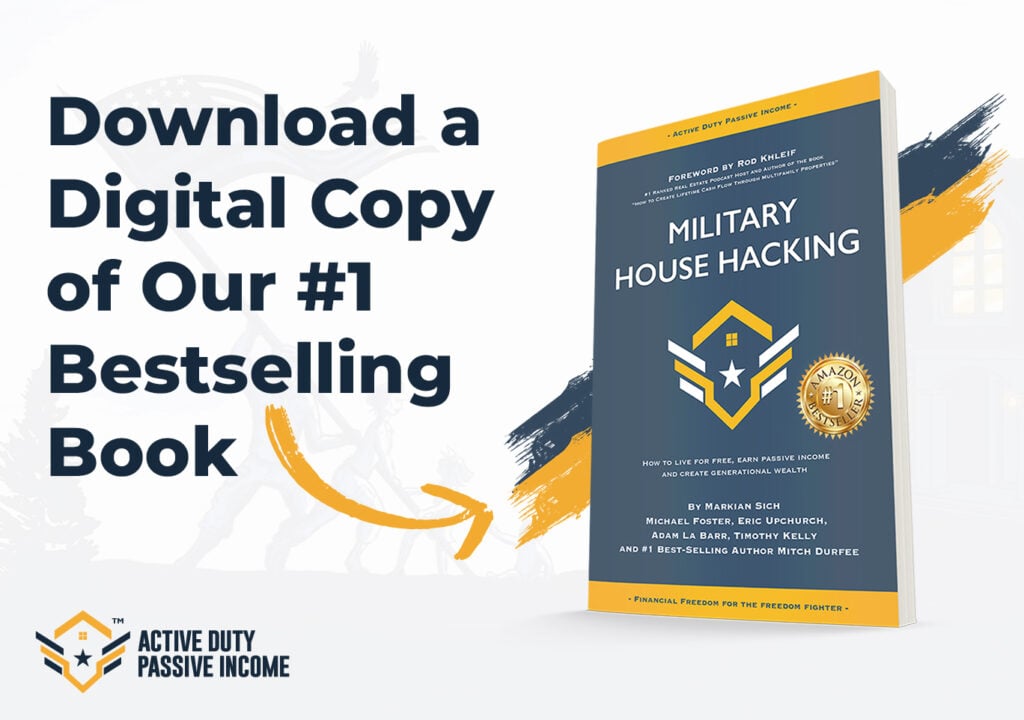How to Get Started in Multifamily Investing?
Meet John and Jessica: I met them at a local real estate investment association (REIA). John and Jessica are a young married couple that hustled their way into multifamily investing. They started by spending a considerable amount of time learning about multifamily investments. They then developed a strategy tailored to their individual strengths. John focused on networking with brokers and finding off-market properties, while Jessica focused on analyzing the deals. Over several months, they fine-tuned their process. When they found a good deal, they would package it up and send it to their network of investors. Their work was such high quality that eventually an experienced syndicator reached out to them and asked them to be part of his team. They’ve since closed on their first deal and are working on numbers 2 and 3.
What’s impressive to me about this example is that they didn’t start with a ton of money. They worked hard and were consistent over a long time. As the British novelist, Anthony Trollope said: “a small daily task, if it be really daily, will beat the labors of a spasmodic Hercules.”
So, we’re all here for similar reasons: We are all active duty or veterans of the uniformed services and we’re interested in building passive income through real estate investing. One of my favorite books on building passive income is “The Richest Man in Babylon” by George Clason. Although it’s almost a century old, it is still relevant in 2019 because it teaches timeless principles. It states: “Learn to make your treasure work for you. Make it your slave. Make its children and its children’s children work for you.” I’m convinced that one of the best ways to do so is by investing in multifamily real estate. There are different ways to jump into multifamily investing.
One of Stephen Covey’s 7 Habits is, “to begin with the end in mind”. Therefore, I’ll begin with what should be our goal: passively investing in real estate. Admittedly, this normally requires tens of thousands of dollars to do, which most probably don’t have. Following the section on passive investments, I’ll discuss several active investing strategies in multifamily that don’t necessarily require a lot of zeros in your bank account.
Invest Passively in Multifamily Real Estate.
There are several ways to do this, but it really comes down to providing debt or equity in a real estate deal. With debt financing, you can essentially be the bank and loan money in a real estate deal for a specified return over a specified time period. Think of this as a savings bond – you loan money for a fixed return. With equity financing, you also provide money for a real estate deal, but in exchange for a share in ownership. Your returns are based on the asset’s performance. Think of this as purchasing stock – you own a share of the company.
How can you get involved?
- Real Estate Investment Trust (REIT). A REIT is a large fund that invests in real estate, very similar to any mutual fund or ETF. REITs usually hold a variety of debt and equity instruments within the funds and may focus on a single sector or include many different sectors within real estate, such as retail, office, multifamily, etc.
- Crowdfunding. It is very similar to a REIT, though most crowdfunding platforms will allow investors to choose specific properties to invest in.
- Partnering with a syndicator. Syndication is discussed in more detail below, but in general, you will gain an equity position (partial ownership) in a real estate deal. One significant advantage of investing with a syndicator is it helps build your resume if you want to be a syndicator yourself. For example, one of my partners at Four Oaks Capital invested passively for years before taking a more active role and can now advertise that he has ownership in over 900 units. My next blog on ADPI will discuss investing with a syndicator in much more detail.
- Partnering with a developer. Similar to partnering with a syndicator, you provide capital (as debt or equity) for the developer to purchase land and build. There’s considerable risk in developments, but the potential reward is also high.
Investing in Multifamily as an Owner-Occupant
Perhaps the easiest way to jump into multifamily investing is to buy a duplex, live in one unit, and rent the other out. The same can be done for a 3- or 4-unit property without too much extra work. Overall, it’s about the same amount of effort as purchasing a single-family home, though there are not as many duplexes, triplexes, and quads on the market. Using this method, you get all the benefits of owning your own home, including market appreciation, along with the added benefits of additional income streams. In many instances, the income from the rental units will completely pay the monthly mortgage payment (PITI), allowing you to potentially live for free. What really makes this option attractive is that both VA and FHA loans allow an owner occupant to purchase small multifamily properties (up to 4 units) with little money down and a much higher loan amount since the bank will add the rents to your income in determining your maximum loan. Compare that to a conventional loan which may require 20-25% down. On the flip side, this is not a passive or fire-and-forget investment. You may inherit tenants. You will be a landlord and be responsible for collecting rent checks, leasing units, general maintenance, and repairs of the property. If this is not your cup of tea, local property managers can take care of the day-day aspect of landlording for a small fee.
Now, to accelerate your growth, after living in the unit for an appropriate amount of time (usually one year or more), you can repeat the process, though there are limits to how many VA and FHA loans you can have. Once you’ve hit the limit and amassed a certain amount of capital, you can also use conventional loans to build your portfolio of multifamily units (see any of Kevin Brenner’s blogs for more details).
Invest in Multifamily using a 1031 exchange
This method comes from a specific section of the IRS code that will allow you to build a portfolio tax-free if you follow certain rules. This is a strategy that requires patience and time. In a nutshell, you begin with an existing investment property. Ideally, over time the value of the property will increase. You sell your investment property, take your profits, and move them into something bigger. The great part is you can start small and learn the business. For example, start with a single-family investment, a turn-key property, or the four-plex you purchased in the above example, hold it for a period, and sell. Then, roll your profits into a more expensive investment property within the allotted time. Do this several times and you’ll be surprised at how much property you could own.
There are several rules in doing a proper exchange. The most important thing to remember is you must use a qualified intermediary, which is a person who can guide you through the process and keep your proceeds in escrow between transactions. You must make the exchange between two investment properties, purchase a more expensive property on the back end, roll all of your proceeds into the second property, and follow a strict timeline on notification and purchase. Since you can start small, you only need enough up-front capital to begin. Market appreciation and leverage take over from there. You can turn one into four, four into eight, eight into twenty, etc. Don’t forget, you can put your tax bill on hold indefinitely.
Wholesale to Invest in Multifamily
The concept is simple: a wholesaler finds a property, negotiates the terms of the sale, and then finds a buyer who will purchase the property. A wholesaler is the middleman and negotiates both sides of the transaction. Wholesalers need to understand the fundamentals of multifamily investing, market dynamics, how to develop relationships with brokers and/or owners, have a pool of investors ready to purchase the new property, and they need to negotiate the terms of the sale that will work for both the seller and the eventual buyer. A lot of the time, the wholesaler will also conduct due diligence to ensure there are no hidden problems for the buyer. For their service, they negotiate a fee. This depends on the difference between the price the seller is willing to sell and the buyer to buy. Wholesaling does not create passive income by itself, but it does generate money you can use to invest passively.
Multifamily Syndication Investing
A syndicator is a person that finds an apartment community, negotiates the terms of the sale, and then acquires the resources to make the purchase. Usually, a syndicator obtains a loan from the bank for approximately 75% of the purchase price and raises the remaining balance from individual investors. Most syndicators look for value-add deals that take advantage of property valuation to boost returns. For example, an apartment that has been neglected or not managed properly can be quickly renovated and properly managed to increase its cash flow. Since commercial real estate (including apartments that are 5 units or larger) is valued based on its income, raising the annual income by $1,000 can increase the property value by up to $20,000. Through a combination of rent appreciation over time and renovations, the syndicator can create significant returns for the investors in a relatively short period. The syndicator will typically get a percentage of the ownership and various fees for purchasing, managing, and selling the apartment community. The two key pieces of syndicating is finding deals and finding money for deals. Building relationships is also crucial to success. My previous blog post on 26 June gives a concrete example of the syndication process.
Beware: Syndicating is not easy, but there are ways to be involved in syndicating without going solo.
Partnering
Syndication takes a variety of skills that are rarely found in one individual. Some people are good at raising money, some are good at analyzing, some are good at managing. Find like-minded investors that complement your skillset and form a partnership. I found my business partners through the Michael Blank program. ADPI provides a similar forum for like-minded investors to get together.
Hustle or provide a service for equity
Some syndicators are looking to streamline their processes and will give equity in exchange for providing a service for the syndicator. The syndication process is multi-faceted and includes finding, analyzing, negotiating, contracting, financing, raising private equity, closing, renovating, managing, etc. I have met several syndicators that out-source various portions of their business. Out-of-town investors will always need boots on the ground, which is a function that most can play. To do this, you need to be good at what you do and provide value to the syndicator.
These are just a few common ways to get involved in multifamily investing. Each one has its challenges and its benefits. In writing this article, I began to compile the steps to each of the above methods, but I noticed that with few exceptions, the steps were the same. I’ll boil the specifics down to the following:
- Educate yourself. Read books, listen to podcasts, attend events, get a mentor, etc.
- Grow your network. Attend a local REIA, get involved in forums, talk to everyone involved in the business, and build relationships.
- Develop a plan. Like John and Jessica -tailor your plan to your individual strengths.
- Take daily action.
Now, go and do. Take the next step in your journey to passive income and financial freedom through multifamily real estate investing.
Author note: the ADPI team never ceases to amaze me. They started their podcast just over a year ago and have already interviewed some of the greatest current thought leaders in real estate investing. Looking over their episode list, you see moguls like Robert Kiyosaki and Grant Cardone; you see heavy-hitters in the podcast and mentoring arena like Michael Blank, Joe Fairless, Rod Khleif, and David Greene; and numerous other professionals in all aspects of investing and passive income. Bravo Zulu ADPI!!
I’m also grateful to my mentor, Michael Blank, who told me about ADPI. A few months back, he emailed me and mentioned he was scheduled for a podcast episode with Mike Foster. At the time, I had never heard of Mike or ADPI, so I did my own due diligence. The first podcast episode I listened to had me hooked — it was episode 80 with Dave and Sharon Gran, owners of militarybyowner.com, a website I’ve used many times. Since then, I’ve talked with Mike and Cheyenne, Tim, Victoria, Adam, Markian, and others. What a great group!
About the author: Brian Briscoe is a LtCol in the Marine Corps, father of five, and husband to Angie for over 20 years. He is an advisor in Michael Blank’s Deal Maker Mastermind and a member of Michael’s Elite Investing Club. He is also an active member of The Church of Jesus Christ of Latter-Day Saints. Brian can be found frequently checking in on ADPI’s #StartTheSpark and will sometimes even Facebook. If you have questions about multifamily or want to know how you can passively invest in multifamily, contact him at [email protected] or visit the website at https://www.fouroakscapital.com/.








